Elizabeth Minchilli's Blog, page 9
October 5, 2020
Eating in Puglia – 2020
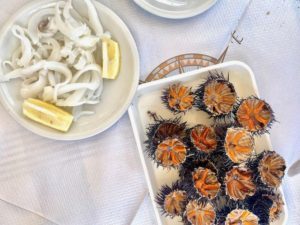
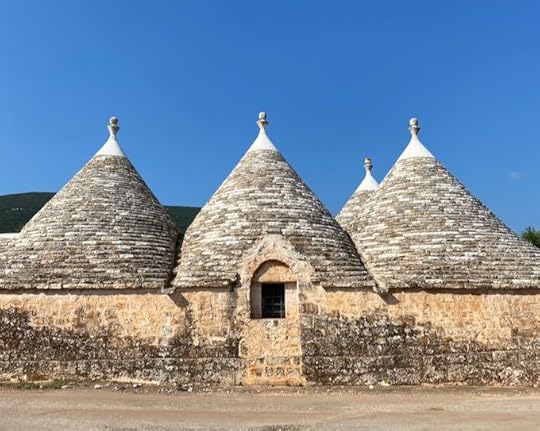
We took a fabulous trip down to Puglia the first week of September. It was our first real vacation since the lockdown in March. While we could have gone earlier, we decided to wait until September for a couple of reasons. The weather was still warm enough to enjoy the beach, but just cool enough that it was both comfortable and there were no other tourists. Heaven.
We rented a villa not far from Monopoli. It was fabulous, with a view out over the sea but not too close. We were also near enough to some of the most charming small towns of Puglia: Cisternino, Monopoli, Locorotondo and Martina Franca.
Don’t ask me to share the link to the villa (we found it through Airbnb) since it was too perfect and I want to make sure it’s available for the future (sorry!) . But there are literally tons of villas for rent in that area, at all price ranges. Just search the area around Impalata
As far as beaches go, we just headed out every day and drove along the stretch of road between Capitolo and Torre Canne. Sophie knows this stretch of the coast very well, and so each day we would drive along the water and just pick a cove that looked good. There are both organized beach clubs (stablilimenti ) or else just random free coves. For the most part all of them are rocky, but you can get in and out pretty easily with beach shoes.
We ate SO MUCH!! And so well. Here’s the list of places we ate at, in case you make it there:
Sale Blu – Monopoli
Our first dinner was fancy! We ate at SaleBlu, which is located right on the water and is definitely upscale. Sophie had heard about it, and since it was her birthday dinner, she got to choose. She chose right! The most amazing seafood!! Also: the restaurant is part of a hotel that looked incredible. Right on the water.
Panificio Fiore: We stopped by here in Bari for our favorite Focaccia
Str. Palazzo di Città, 38, 70122 Bari BA
Osteria del Caroseno, Castellana Grotte We had the most delicious dinner here. Sophie had stayed here earlier in the summer and wanted to bring us back. I’m so glad she did! It’s an incredible restaurant, and well worth making the effort to go here. It is family run, so very warm and cozy and welcoming. But the food is not your typical simple trattoria fare. Everything is home made, but of such high quality and sophistication that it’s hard to believe you are in a small town in Puglia. I particularly loved the gnocchetti made by the nonna of spinach. The father (the chef) coats them in a fonduta of local cheese and toasted almonds. It was perfection!
La Locanda del Riccio The coast along this stretch of sea is full of small places to eat. Some are fancier than others, but all of them are located right on the water and you can wear your swim suit and flip flops. And ALL of them are about seafood. We actually had tried to go to a much simpler one down the road, but since it was Sunday it was full. We stumbled onto La Locanda del Riccio and they had a table for us right on the water, which was perfect!!
Pavi: After a rest at home we headed out to nearby Locorotondo for a walk and aperitivo one evening. Locorotondo is beyond cute. Like a movie set kind of cute, but also a very real town with real people living there. Since it was September and also because of the virus, it was pretty empty, which was fantastic The town of Locorotondo is located up on a hill, and the ring road that circles is it known by locals as the Lungo Mare, even though it’s not by the sea. But it feels like it is! We chose a cute little bar for our drink, which was about a half gallon of Gin & Tonic with perfect little appetizers.
Ottolire Restaurant We left Locorotondo for dinner in the countryside at Ottolire Resort. A gorgeously restored country hotel that also has an amazing restaurant. It was hard to photograph all of the truly excellent dishes prepared by chef Vincenzo DiGiuseppe but we had what were some of the best tortellini I’ve ever had. They were stuffed with beef involtini, and floated in a puddle of heavenly parmigiana reggiano.
Ricciolandia Since it was a week day there was no one around and we were easily able to grab a table at one of Sophie’s favorite places Ricciolandia. this place couldn’t be simpler, just a shack on the water with plastic tables and chairs. And piles of fresh seafood. Mountains of freshly opened sea urchins (so good!!!) and sliced squid, raw, which is another speciality that is called tagliatelle. I also loved the mussels, which were battered with some cheese and other herbs and spices, put back in the shell and then the whole thing deep fried. Also, what is better than a mess of spaghetti with clams and mussels by the sea?
La Cantina Alberobello
We met up with Domenico’s brother in Alberbello to eat at Ristorante La Cantina Alberobello. A teeny tiny place with an open kitchen. We had the mixed house antipasto which was a series of fabulous small dishes, including these sautéed peppers with green olives and breadcrumbs. It was never ending and every dish better than the next, including lots of vegetables.
Ristorante Gatto Rosso Taranto is a seaside town with a complicated history. But the reason we were going was two-fold. We wanted to visit the archeological museum (one of the best in Italy) as well as the amazing restaurant Ristorante Gatto Rosso where Agostino Bartoli creates some of the best food in Puglia. The shrimp risotto with burrata which was just one of the extraordinary dishes we had.
Zio Pietro Once evening we visited Cisternino which as got to be one of the most charming towns in Puglia. We ate at a fornello, a type of place that is typical of Cisternino. A butcher in the mornings, in the evenings it opens as a restaurant. You come in, choose your meat, then it is cooked for you in the wood burning oven. We chose to eat at Zio Pietro, one of the oldest in town,
You can read all about this tradition in my book Eating My Way Through Italy The tables are located all along the small alleys.
A few days we just picked up supplies to have picnics at the beach, or dinner at hour villa.
Panificio L’Assunta Contrada S. Antonio D’Ascula, 169, 70043 Monopoli BA
Spiga d’oro pane & sfizi Contrada Stonazzeli, 56, 70043 Monopoli BA
Shopping:
Grottaglie is known for ceramics. We stopped by our friends at Fasano Ceramiche CNF to say hi and pick up a few things. Who can resist?
We also discovered a new ceramic place we’d never been to before: Antonio Fasano. He is located at Via Caravaggio 7, Grottaglie. His phone number is:+39.099 566 1871 you can try sending an email here: e-mail: info@bottegaceramicafasano.com
I hope you enjoyed this virtual tour of eating in Puglia. If you’d like to join us in real life, we’ll be visiting many of these places during our Week in Puglia Tours in 2021 and 2022. I hope you can join us!!
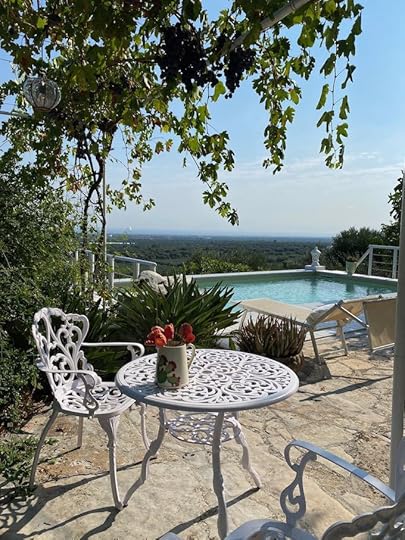
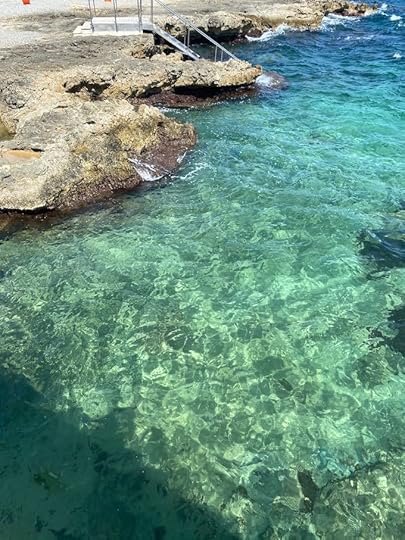
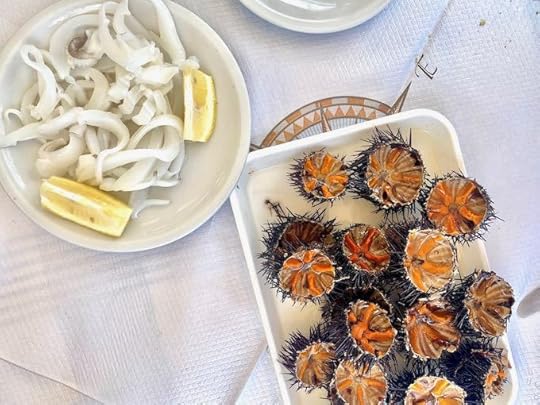
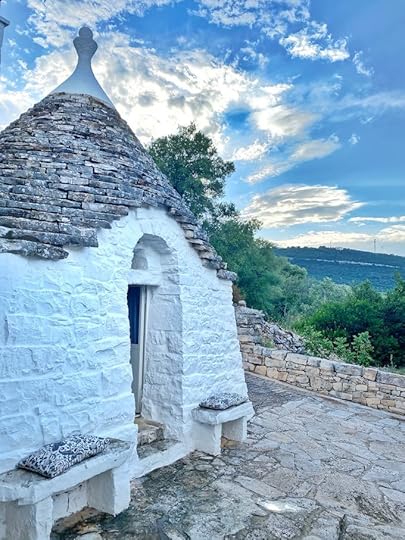
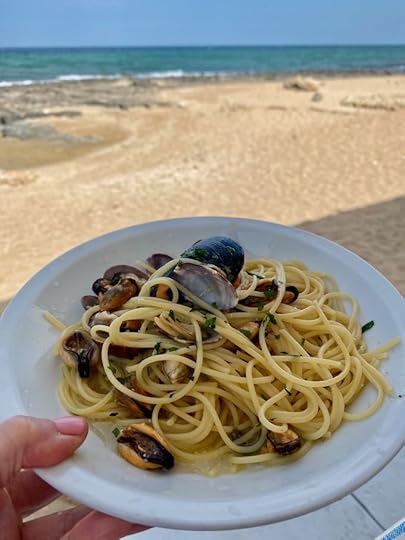
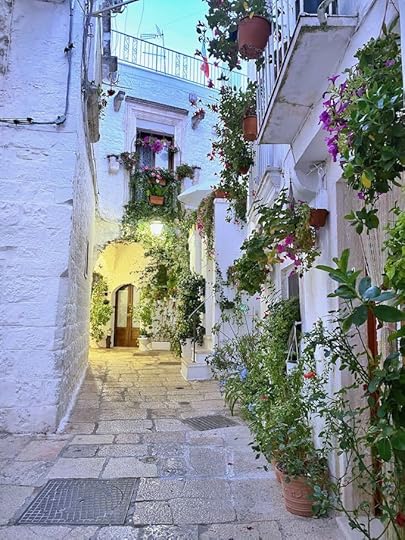
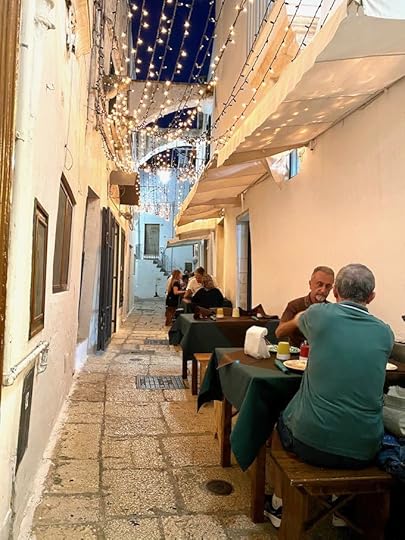
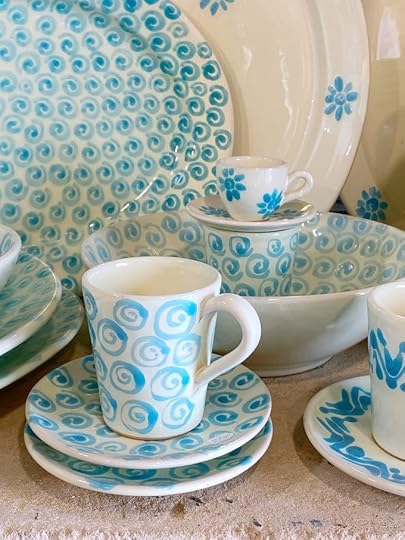
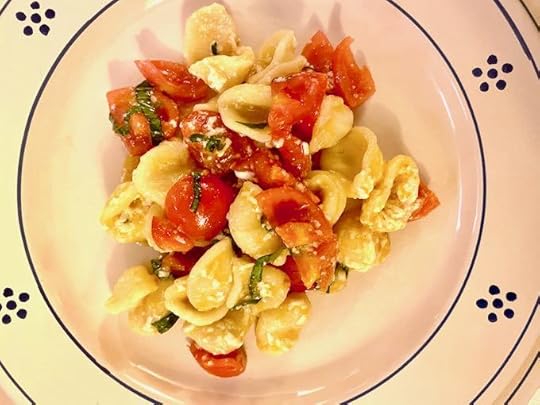
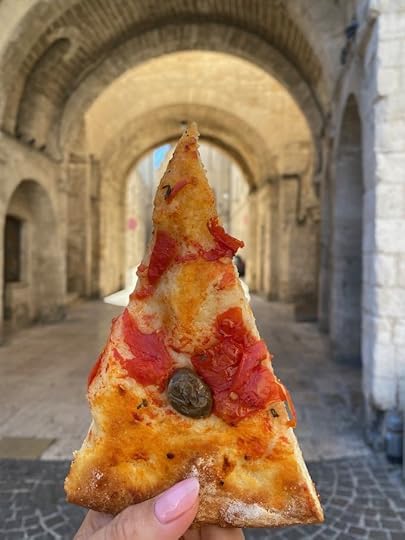
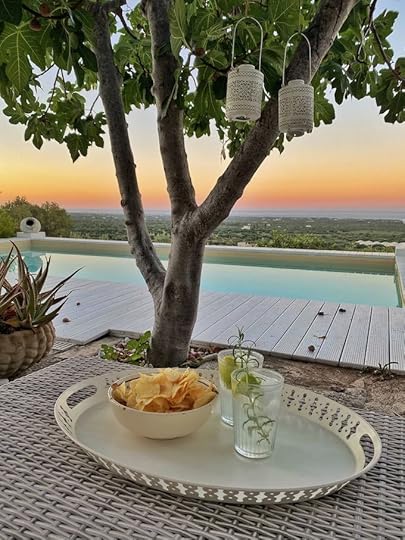
The post Eating in Puglia – 2020 appeared first on Elizabeth Minchilli.


September 22, 2020
Pesto
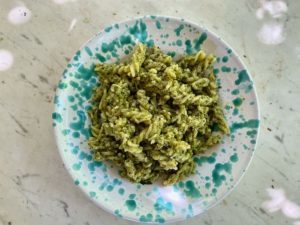
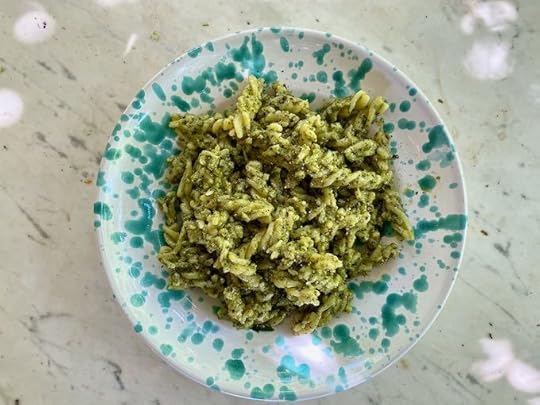
Is your previously perky basil looking leggy and forlorn? That’s a sure sign that summer is on it’s way out and it’s now time to turn towards things like pumpkins, cabbage and broccoli. But I’m putting a little summer aside for later, and making pesto with every last leaf of basil I can pull off these sorry looking plants.
I made a video last week of my favorite recipe. You can either use the Pesto it right away, or else freeze it for later. I thought I was going to freeze mine, but ended up eating it all! This recipe is good for about 1 pound / 500 grams of pasta.
Although most pesto recipes are all the same, mine uses almonds instead of pine nuts. Why? Because they are much less expensive and frankly, I like them just as much in pesto.
If you can’t get your hands on fresh basil, you can make all sorts of pesto. Sure, they will taste completely different, but that’s a good thing. Expand your pesto horizons! Here is my recipe for Sage Pesto, and I also love to make pesto from Arugula.
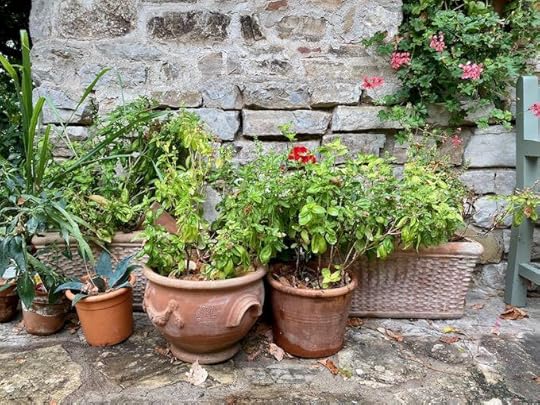
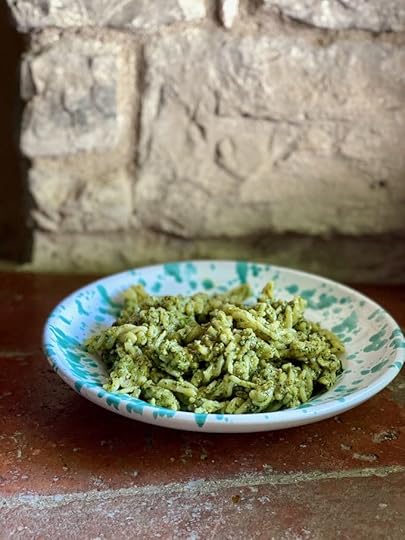
Pesto
Yield 4-5
Here is my basic recipe for pesto. If you’re serving it over pasta, it will be enough to coat about 1 pound or 1/2 kilo of pasta. Make sure the pesto is at room temperature before using it, and if it seems a little too thick, you can add a bit of reserved pasta cooking water to the mix.
Ingredients
1 big bunch of basil leaves (about 2 packed cups)
1/3 cup almonds (I use raw almonds with the skin)
1-2 cloves garlic
1/2 cup extra virgin olive oil
pinch salt
1/2 cup grated parmigiano reggiano (or grana)
Instructions
Place the basil leaves in a food processor along with the almonds, salt and garlic. Blend until finely chopped. Scrape down the sides if you have to.
With the motor running, pour in the olive oil. Mix until it is pureed. Again, you may have to scrape down the sides.
If you are going to eat it right away, add the cheese by just mixing briefly.*
Scrape the pesto into a small bowl and cover with plastic wrap with the wrap touching the top of the pesto. This will keep it from turning black. Otherwise top with a thin layer of olive oil.
To store: place in a jar, top with olive oil, and freeze. Or else keep it like this in the refrigerator where it will keep well for about a week.
* Note: if you are freezing it, don’t add the cheese until you thaw it out. Then just mix it in by hand.
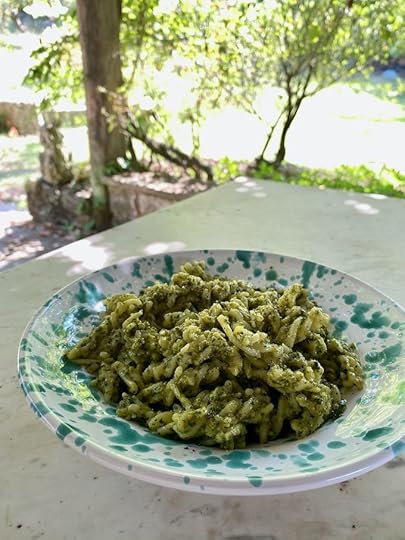
You can find more recipes like this in my latest book, The Italian Table.
Would you like to join me cooking recipes like this in Italy? You can! You’ll find a list of all of my Week in Italy tours here.
The post Pesto appeared first on Elizabeth Minchilli.


September 14, 2020
figs
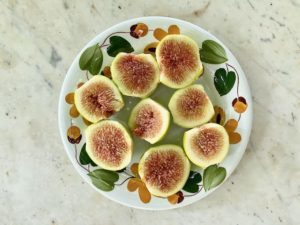
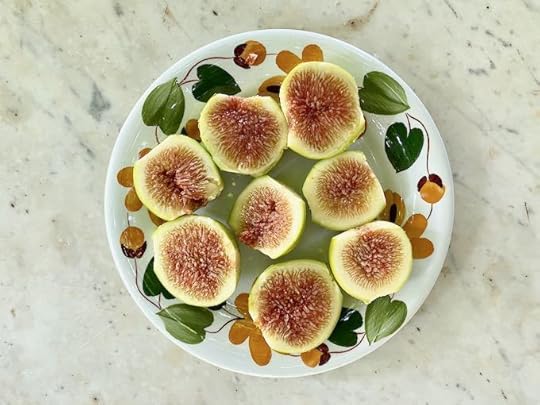
I posted a photograph of figs recently and I was surprised by the amount of questions I got. I have to admit that I take figs completely for granted. Don’t get me wrong, I LOVE them. But since we have about 12 fig trees here in Umbria, my biggest challenge when dealing with figs is that we have WAY too many of them, in WAY too short a season.
Due to the high volume of fig-related queries, I thought a fig post would be in order. So without further ado here are some of the questions I got, and as well as a few answers:
How do you eat a fig?
I found this one the most surprising since my immediate response is ‘Well, you just eat it!” But then I realized that if you’ve never actually held a fig in your hand, then it could be a bit confusing. You can and should eat figs raw. If you have a very ripe fig then there is nothing better.
To peel them or not?
Depends. The riper the fig, the thinner the skin, and so you won’t even notice the skin. And if it is very thin, then you probably won’t even be able to peel it off. In any case, the skin is totally edible.
What is your favorite way to eat a fig?
Like I said before, as it. Preferably standing beneath the tree you picked it from. But if that’s not possible, try to buy figs that are soft to the touch. There is nothing as boring as an unripe fig.
Here are a few easy ways to enjoy fresh figs that don’t require any recipe:
Figs and Prosciutto:
Figs are super sweet and so pair perfectly with salty prosciutto. My favorite way to serve them is to make a cross cut in the fig, from the top, without cutting all the way through. Then roll up a piece of prosciutto loosely, kine of like a rose, and nestle it in there. Figure on 3-4 per person as an appetizer.
Fig Panino
If you have access to pizza bianca or focaccia, slice it horizontally, then layer a slice of prosciutto and a couple of very ripe figs on top. Smash it down and enjoy.
Fig Salad
If your figs are sort of unripe and on the firm side, then just cut them in quarters and add them to a green salad.
Dried Figs
Domenico always dries as many as he can in his dehydrator, which is one of the best investments he ever made.
If you have enough figs to actually cook with, then here are a few recipes:
Fig Cake: My recipe for Strawberry Ricotta Cake was originally made with figs in my book The Italian Table. Use this recipe but just sub in figs.
Fig Compote: Lightly stewed figs are good on anything, but especially this simple cake.
Fig Jam: Even though I personally prefer tart jams, like apricot, I always make at least a dozen jars of fig jam to use in crostatas or else to give away at the holidays.
Fig Gelato I recently made this gelato and it was insane. My friend Anissa sent me the recipe:
500 gr figs, halved
175 gr sugar
300 ml heavy cream
300 ml milk
Put it all in blender, chill, then churn in your ice cream maker.
Fig Bread: And if you’re really drowning in ripe figs, then just take your favorite banana bread recipe (this is one I love) and sub in figs instead of bananas.
Fig Frittata The oddest dish I ever had was when my friend Salavatore came over and made a frittata with totally unripe figs. They were hard, almost the texture of zucchini. I can’t say it was my favorite thing ever, but it was good and I’m very glad I got to try this old fashioned recipe.
If you have a favorite fig recipe let me know and leave it in the comments below. Thanks!
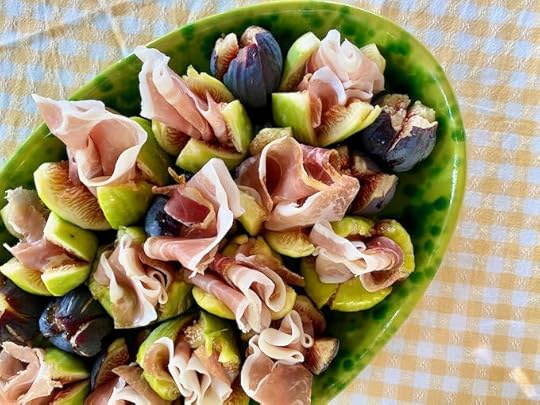
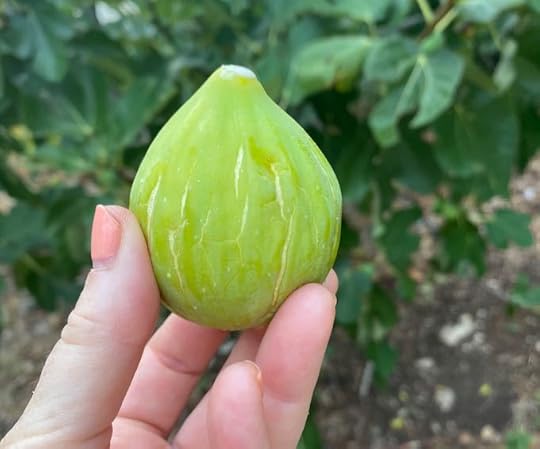
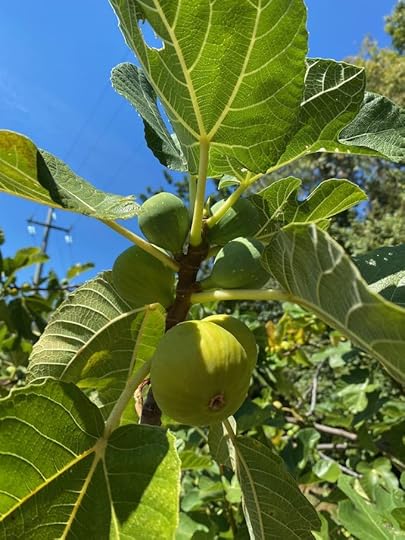
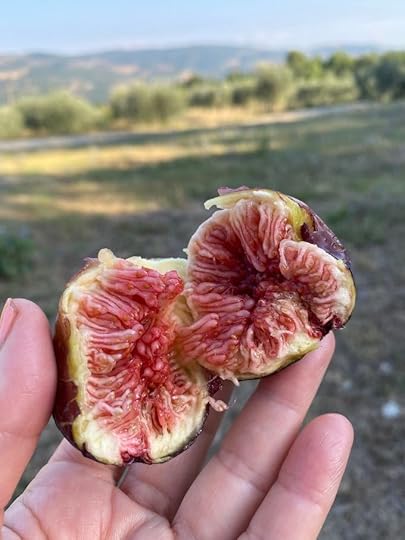
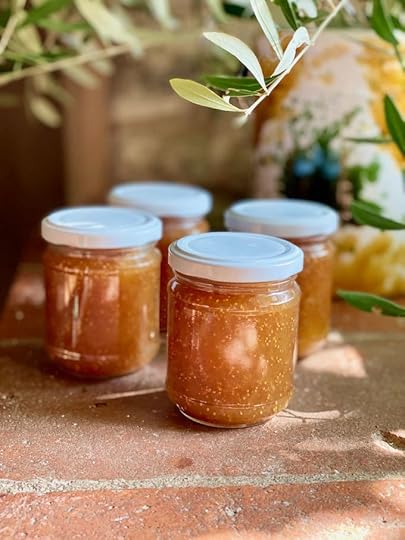
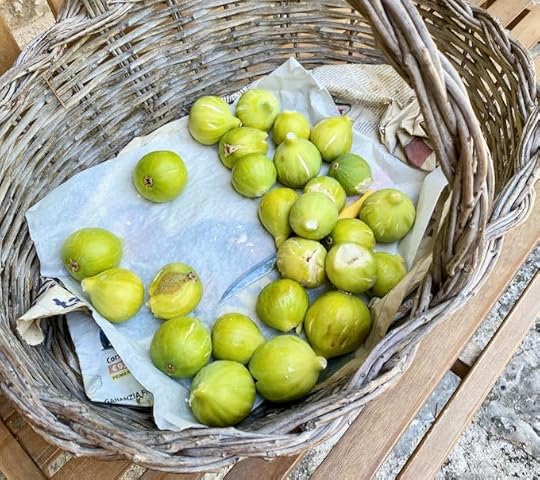
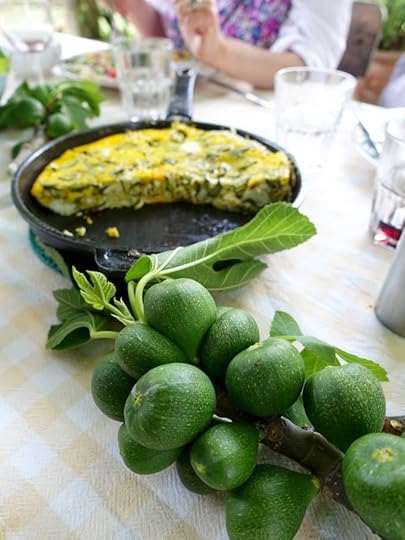
If you’d like to join me here in Umbria to cook things like freshly picked figs, I’d love to have you. Visit this page for all of my tours for 2021 and 2022.
The post figs appeared first on Elizabeth Minchilli.


September 3, 2020
Bean Soup with Garlic
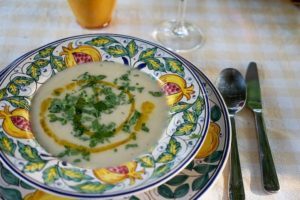
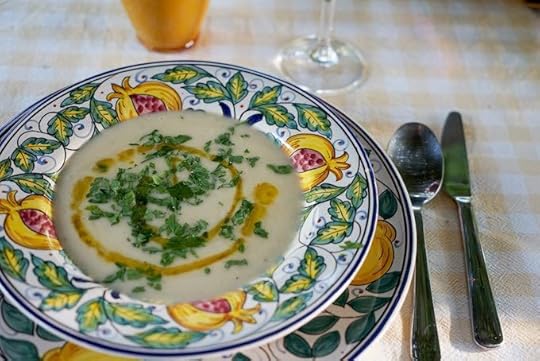
Is it time for bean soup yet? Every year, about this time, as the nights start to get cold my body wants something a bit more comforting than pasta with tomatoes. Or even some version of minestrone. I crave a big bowl of rich, thick bean soup.
Once the weather turns just a tad bit on the cooler side, and the days start to shorten, I make versions of this bean soup at least once a week, and especially when we have friends over. You have no idea how happy a simple bean soup makes people. This time of year, luckily, is when the first fresh shelling beans start to turn up, and so I use those if I can get them. But even when I can only get dried beans , it’s my soup of preference.
Since this soup is so simple, and it’s basically beans and not much else, the quality of the beans do matter. Although you can certainly use canned beans if you insist, it really won’t be the same soup. One thing that makes this soup so delicious is the use of the water the beans are cooked in. Seasoned with carrot, celery onion and bay leaf, and full of the starch from the beans, it adds a base to the soup that you just can’t get from a can.
Although the soup itself doesn’t have a lot of olive oil in it, a final swirl of your best extra virgin olive oil is absolutely essential to finish the soup, along with a sprinkle of freshly chopped parsley.
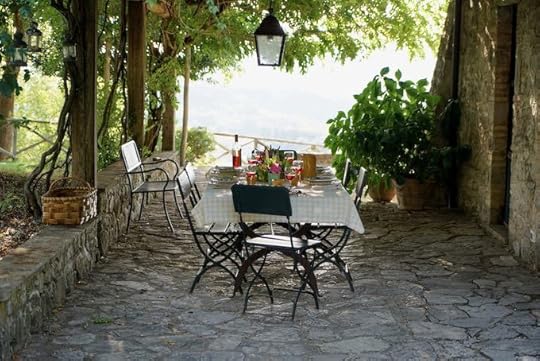
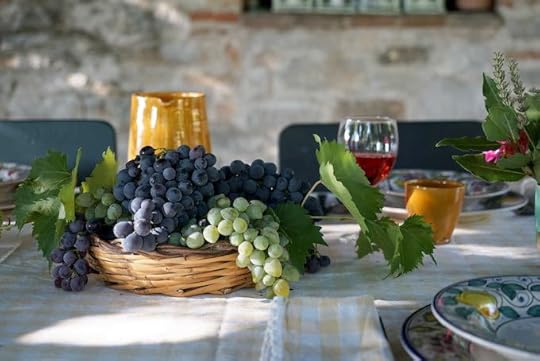
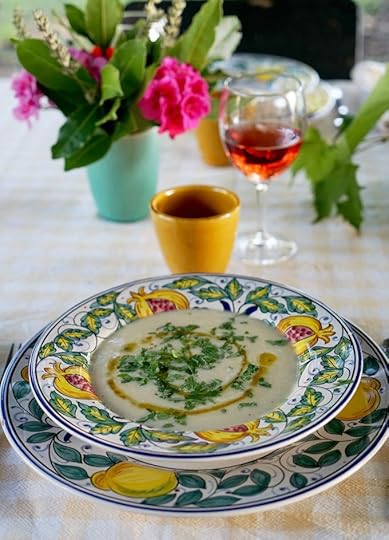
Bean Soup with Garlic
Yield 4-5
Ingredients
4 cups cooked white beans*
3 cups reserved bean cooking water*
1/2 cup olive oil
8 cloves garlic, chopped
black pepper
1/2 cup chopped parsley
toasted bread (optional)
Instructions
Pour olive oil into a large pot, along with the garlic. Heat gently, till garlic begins to soften. Let cook for a few minutes, but do not let it brown. Add the beans, and give a good stir. Add some freshly ground black pepper, and the reserved bean broth, and bring to a simmer. Let cook for about 20 minutes, covered.
Take off the heat. Using an immersible blender, blend the soup just a bit. I like to have some whole beans floating around, but also like to give the watery broth a thickness.
Taste and adjust for salt and pepper.
To serve, ladle into bowls, sprinkle with parsley and drizzle some extra virgin olive oil on top. If you want to make the dish even more filling, put a piece of toasted rustic bread at the bottom of the bowl. And if you want to add more garlic, rub the toast with a clove of garlic, before you cover it with soup.
Cooking Beans
This will make 7 cups of cooked beans
1 pound dried cannelini or borlotti beans1 carrot, peeled1 stalk celery1 onion, peeled and cut in half1 or 2 bay leaves1/2 teaspoon salt
Put the beans to soak the night before you are going to make this soup.The next morning, drain and rinse the beans and put them in a large heavy bottomed pot. Add water so it comes up 3 inches over the top of the beans.
Bring to a slow simmer. As the foam from the beans begins to form on the surface of the water, remove with a spoon and discard. Once the foam has stopped forming, add the other ingredients, return to simmer, and place the lid on, slightly askew. Cook until quiet tender, but be careful not to over cook.
Turn off heat and drain, reserving the bean broth!!
You will need 4 cups of beans for the recipe above. You can place the excess beans in a ziplock bag and freeze or use during the week for other dishes
This recipe is from my book The Italian Table.
If you’d like to join me in Italy for a meal like this, you can! See this page for our current week-long food tours. These photos were taken at my home in Umbria, where we have our welcome dinner for our Week in Umbria Tour.
The post Bean Soup with Garlic appeared first on Elizabeth Minchilli.


August 10, 2020
Tomato Ricotta Tart
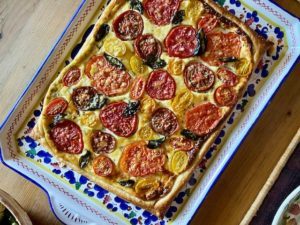
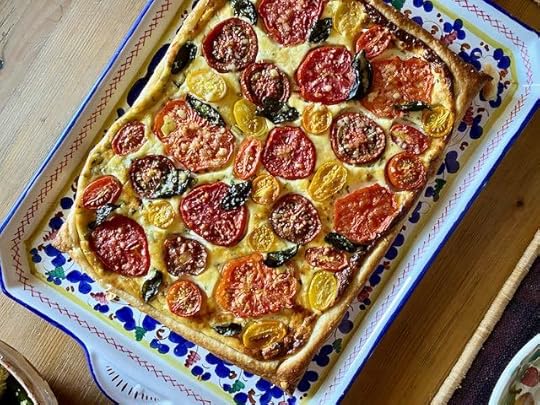
If the words Tomato Ricotta Tart sound vaguely familiar, they should. In June I wrote about a Zucchini Ricotta Tart when I was experiencing the strong, intense flush of love for the first zucchini of the season. Now it’s August and I never want to see another zucchini again in my life. My fickle affection has now turned to tomatoes and I’ve adapted the original recipe to now officially become The Tomato Ricotta Tart.
This is good news (and not surprising) since I have a mountain of tomatoes to get through.
The Tomato Ricotta Tart is pretty much the same as the zucchini one, except for a few small, but important, changes. The biggest change is of course NO zucchini. Instead use slices of the ripest, best tomatoes you can find. Cherry tomatoes, cut in half, also work, or a mix is not only delicious but awful pretty.
Also no goat cheese. I like the sweetness of the ricotta and add extra parmigiano because parmigiano always goes with tomatoes. I am still loving the addition of both mascarpone and yogurt, but if you don’t have them, that’s ok, just use more ricotta.
And when tomato season wanes? Of course I’m already thinking kale and pumpkin!
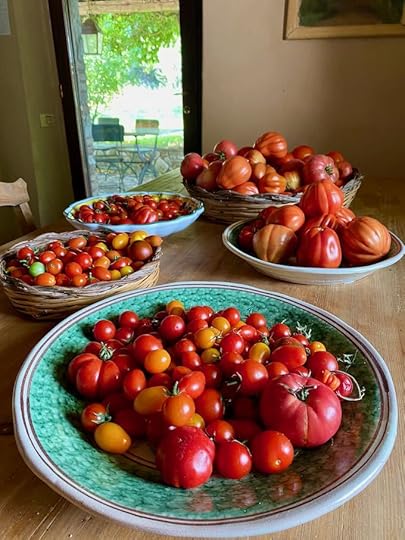
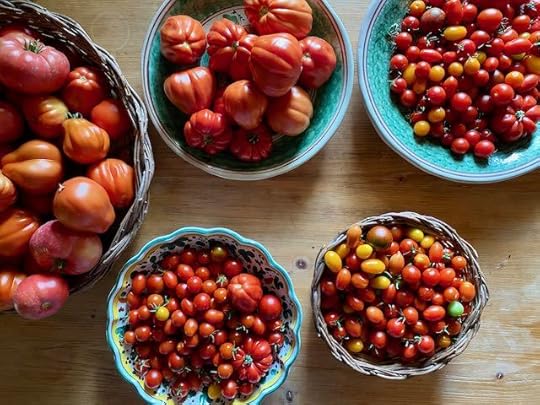
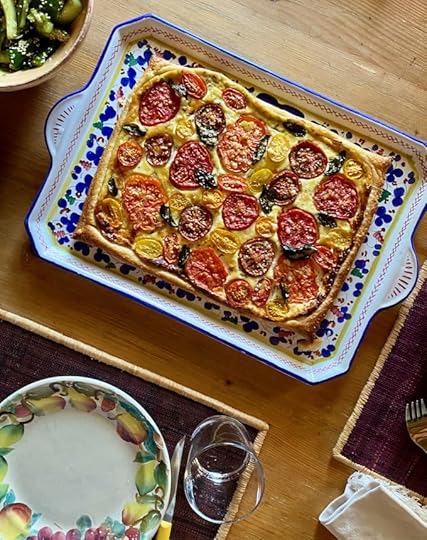
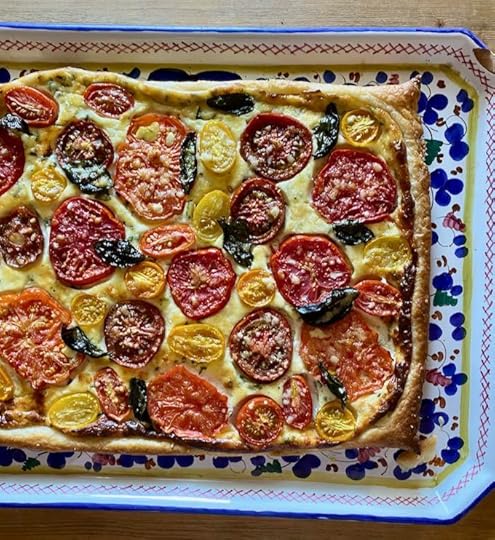
Tomato Ricotta Tart
Yield 4-6
This is a spin on a Zucchini Tart I made earlier in the season. Although the recipe calls for mascarpone and yogurt, if you only have ricotta just go with that. The parmigiano is non-negotiable.
Ingredients
1 cup full fat ricotta (drained if very wet)
1/4 cup mascarpone
1/2 + 1/4 cup grated parmigiano
1/4 cup whole milk yogurt
1 egg, beaten
1 clove of garlic, grated
1/4 cup chopped basil
1/2 tsp salt
Freshly ground black pepper
2 – 3 slices tomatoes
2 tablespoons of olive oil
Salt and pepper
fresh basil leaves
1 package pre-made puff pastry (thawed out if frozen)
Instructions
Preheat oven to 400F/200C
In a medium bowl whisk together ricotta, mascarpone, 1/2 cup grated parmigiano, yogurt, egg, garlic, chopped basil and salt. Mix until smooth.
Cut the tomatoes into 1/4 inch slices. If using cherry tomatoes, cut in half.
Lay out the pastry onto a baking sheet. Using a sharp knife score a line around the rim, about a 1/2 inch in from the edge.
Spread the cheese mixture onto the pastry, within the scored rim. Artfully arrange the tomatoes and basil. Season with salt and pepper. Scatter remaining 1/4 cup parmigiano on top. Drizzle with olive oil.
Place in pre-heated oven and bake for about 25 minutes. The cheese and crust should be golden.
Take out of oven and let rest at least 20 minutes. It’s best at room temperature, which gives the cheese a chance to set. If you’d like, scatter some fresh herbs on top before serving.
For more recipes from Italy see my book The Italian Table.
And if you’d like to join me in Italy to eat and cook things like this tart, you can. I leave Week in Italy food tours in Umbria, Sicily, Puglia, Parma and Abruzzo. Find out more here.
The post Tomato Ricotta Tart appeared first on Elizabeth Minchilli.


August 9, 2020
Zucchini Tomato Soup
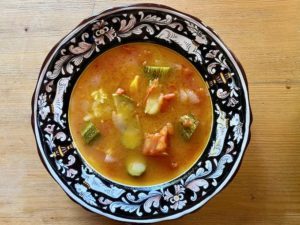
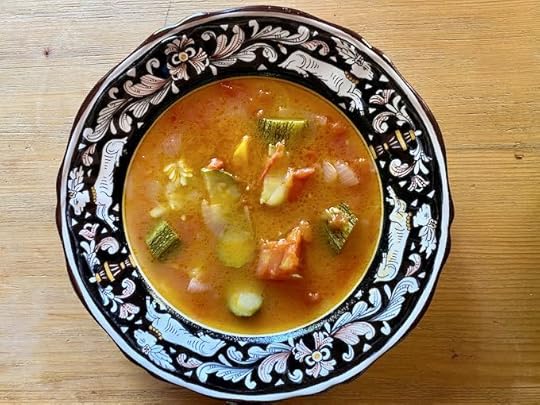
Zucchini Tomato Soup is always one of the last recipes I make during zucchini season. It’s not that I don’t love it (I do) but it’s the recipe I turn to when I have a bunch of zucchini I don’t quite know what to do with. You know: a mishmash of misshapen, or too-big or just somehow a bit unloved zucchini. Also? At this time of year I’m looking for a recipe that uses up the last of the zucchini and that I can just put away in the freezer. Why? Because by mid-August I just can’t look at another zucchini.
Although this Zucchini Tomato Soup may look like minestrone to you, it’s not. There is no carrot or celery, nor peppers or anything else. It’s really all about the zucchini with a few summer ripe tomatoes to make it brothy and good. I usually make a few batches, then freeze them in bags, ready to use by January or so, when I have a feeling I’ll be happy for any sign of summer.
Of course you don’t have to freeze it. It’s great as is, right away. If you are having it now, can I suggest you have it room temperature? In which case a few leaves of fresh basil would be great. You can even swirl in some pesto if you have it. If you don’t like it chunky, feel free to puree it.
If you want to make it more of a meal, you can add cooked beans or a potato or two. Or do what I did the other night: Preheat the broiler in your oven. Heat the soup on the cook top, then ladle into oven proof bowls. Carefully crack and egg or two into each bowl, sprinkle with grated parmigiano, then put in the oven for about 5-8 minutes, until the eggs are just set. Serve with thick slices of crusty bread or, even better, olive oil topped bruschetta.
One thing to remember is not to skimp on the olive oil. Since this recipe for Zucchini Tomato soup doesn’t use broth, the olive oil is what gives it a lot of body and lusciousness.
And if you’d like to see how it’s made, here is a video I made last week.
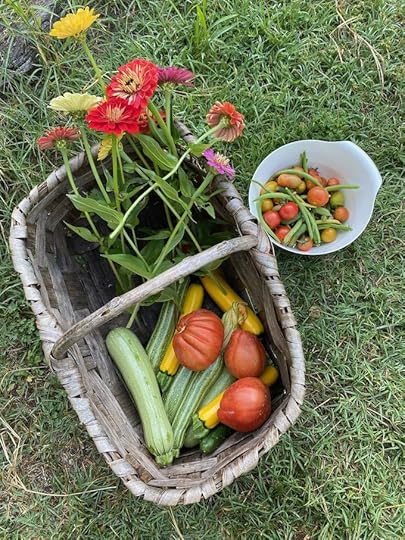
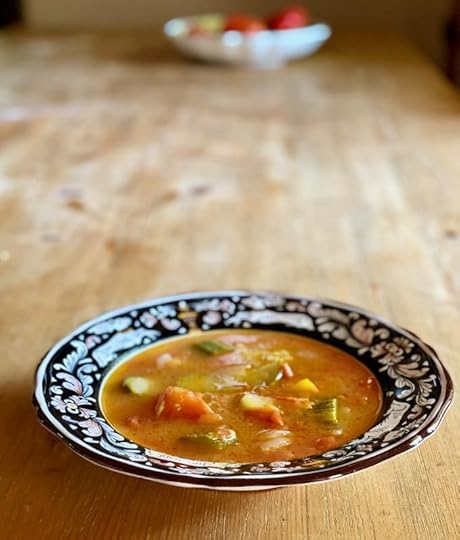
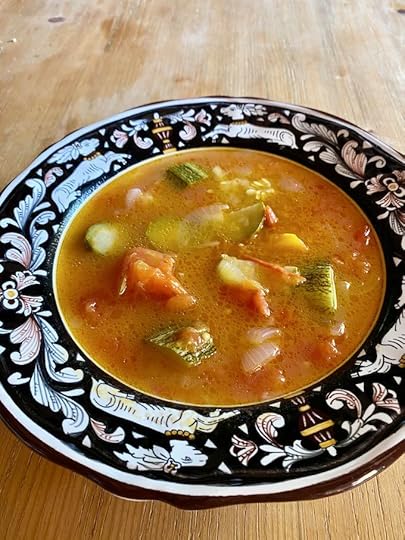
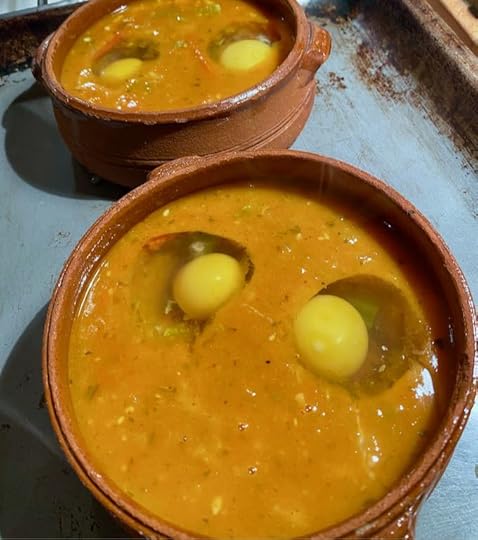
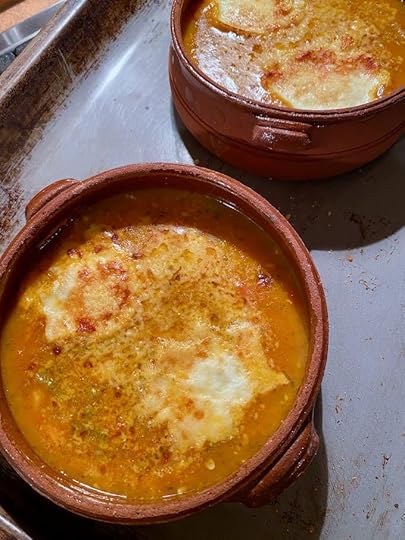
Prep 20 mins
Cook 1 hour
Total 1 hour, 20 mins
Yield 4
Ingredients
1/3 cup extra virgin olive oil
1 large white or yellow onion, sliced
1 tsp salt
pinch red pepper flakes (optional)
3 cloves garlic, chopped
1 pound / 1/2 kilo of zucchini , chopped
1 pound / 1/2 kilo of very ripe tomatoes , chopped
4 cups / 1 liter water
Instructions
Pour the olive oil in a large pot, and add the onions and salt. Cook over medium heat until the onions are softened, about 5 to 8 minutes. Add the garlic and red pepper flakes if using, and cook another minute.
Add the zucchini and tomatoes, and stir. Add the water, str and bring to a simmer. Partly cover and cook for about 45 minutes to an hour. You cant the zucchini to be falling apart. Taste and adjust for salt.
Serve hot or at room temperature. If freezing, let cool off then freeze.
For more recipes from Italy see my book The Italian Table.
And if you’d like to join me in Italy to eat and cook things like this soup, you can. I lead Week in Italy food tours in Umbria, Sicily, Puglia, Parma and Abruzzo. Find out more here.
The lovely ceramic bowl in this photograph comes from FIMA Deruta
The post Zucchini Tomato Soup appeared first on Elizabeth Minchilli.


July 27, 2020
Panna Cotta
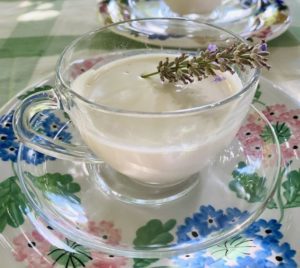
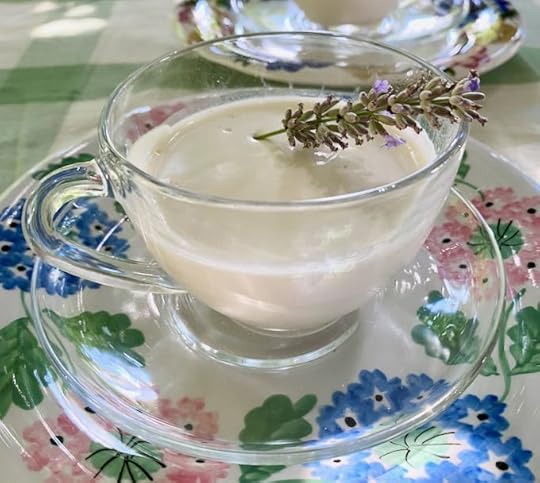
Although we can now go grocery shopping whenever we’d like, we are still kind of in the mindset of trying to go no more than once a week. It’s only partly to avoid unnecessary contact (Italy, and especially Umbria, is doing fine) It’s mostly that we just don’t need as much stuff since our vegetable garden is groaning. But those 3 months of lockdown have definitely left a mark on the way I shop. During the months where we were pretty much stuck at home and had to make do with what we had, we made sure that the few times we were able to get to the store, we bought all the things – essentials – we just might need.
Somehow (and I really don’t know why) one of those ‘essentials’ was heavy cream.
It’s not like I usually bought heavy cream. If a recipe called for it, then I would run out and buy it. I’m not sure what got into me and Sophie, but during those months we always thought heavy cream would be a good thing to have on hand, ‘just in case.’ Inevitably we’d end up checking the use-by date and realize that we’d better use it up quickly, or else it would go bad. One time I turned it into creme fraiche, and often we’d end up whipping it to use on all the cakes Sophie was making.
Weirdly, this habit of making sure I have a pint or two of cream in my basket at the super market has held over. And while I’ve been making gelato since it’s been so hot, I’ve also become a huge fan of panna cotta.
Once you make panna cotta it will quickly become one of your go to ‘company’s coming over’ kind of desserts. It’s so easy, yet so impressive. And people LOVE it! It’s also the perfect treat to make for yourself, since it’s already in portions, and keeps for a few days in the fridge. I sometimes make it with almond milk, which I usually have in the pantry, but more often just go for the classic cream. Once you make it you can spin it in any direction you want, topping it with fresh fruit, or chocolate sauce, or a coulis of whatever’s in season. It’s also great as is.
While I usually stick to basics, using vanilla as the main flavoring, I have always been a big fan of Skye McAlpine’s more creative spins. I LOVE her saffron version (from her first book, A Table in Venice) and made it the other night as a sweet end to an Indian feast I cooked up. I also love her impossibly romantic lavender version, from her lovely new book, A Table for Friends. This new recipe uses lavender infused honey to flavor it. The recipe couldn’t be easier, and the hint of floral is just right and perfect paired with the honey.
I’ll include the recipe for a basic panna cotta below, as well as Skye’s lavender version, since it was so special. And I’d definitely recommend a Table for Friends, which is full of recipes that are easy (like her panna cotta ) but somehow make every meal seem like a special moment.
One tip I loved from Skye was that she often makes individual panna cottas in small jars (old yogurt jars are perfect) to take on picnics. I love making them in glass teacups that I have. I sometimes make a coffee flavored version and serve it in espresso cups.
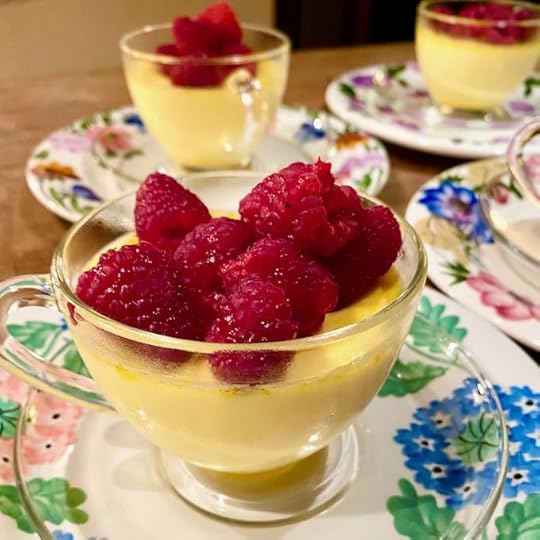
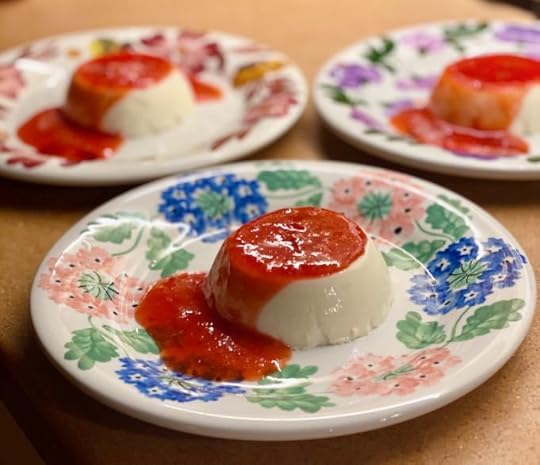
Panna Cotta
Yield 4
Although I always make serving sized portions, in small cups or ramekins, you can also just make one large one. I sometimes do it in a tube pan, then fill the center with berries, which is very nice looking. If you are unsure how much to use for your mold, then just fill it with water, and measure that amount. Then figure cream + sugar = that amount.
Ingredients
2 gelatin leaves*
500ml / 2 cups heavy cream
80 gr/ 1/3 cup sugar
1 teaspoon vanilla extract
Instructions
*I know that in the States people tend to use powdered Knox unflavored uncolored gelatin. The equivalent for 2 sheets (each sheet is 2 grams) is 2 teaspoons, more or less. If using powdered gelatin, let it bloom in 1/3 cup of cold cream for 5 minutes before adding.
Place the gelatin sheets in a small bowl of water to soften for 5 minutes
Heat the cream and sugar in a pan over medium heat. Heat till just hot, do not let it boil. Take off the heat. Remove the gelatin from the water, wringing the water out with your hands. Add to hot cream and stir well to dissolve. Add vanilla, stir and divide into four cups or ramekins.
Let come to room temperature and then place in refrigerator to set for at least 4 hours or until set.
Serve in cups, topped with anything you’d like: fresh fruit, berries, or chocolate sauce. If you make them in ramekins, you can gently dip them in warm water to loosen the panna cotta and them tip it out onto a plate. Garnish with fruit or in a puddle of coulis.
Lavender Honey Panna cotta
Adapted From A Table for Friends by Skye McAlpine
Serves 8
3 leaves of gelatin/ 3 teaspoons powdered unflavored gelatin
50 ml / 4 tablespoons good quality runny honey
3 tablespoons of water
1 tsp of lavender
500 ml / 2 cups heavy cream
250 ml / 1 cup whole milk
Fresh lavender for garnish.
Place the gelatin sheets in a small bowl of water to soften for 5 minutes
Place honey, water and lavender in a pan and warm for a few minutes to infuse the honey. Add the milk and cream and warm to just before boiling.
Take off the heat. Remove the gelatin from the water, wringing the water out with your hands. Add to hot cream and stir well to dissolve.
Strain and divide into 8 cups or ramekins.
Let come to room temperature and then place in refrigerator to set for at least 4 hours or until set.
Serve garnished with fresh lavender sprigs.
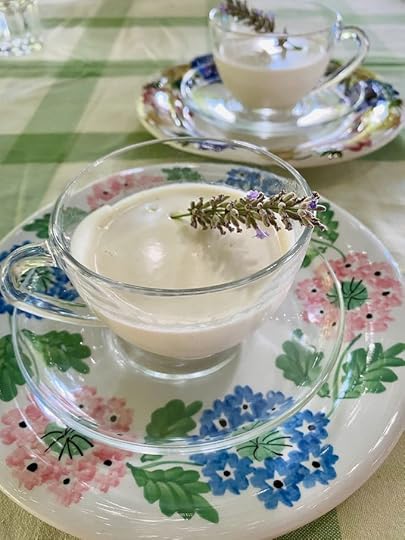
The post Panna Cotta appeared first on Elizabeth Minchilli.


July 13, 2020
Cold Coffee in Italy
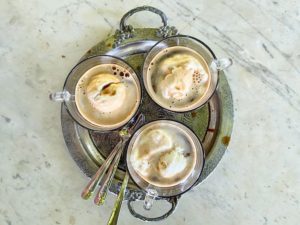
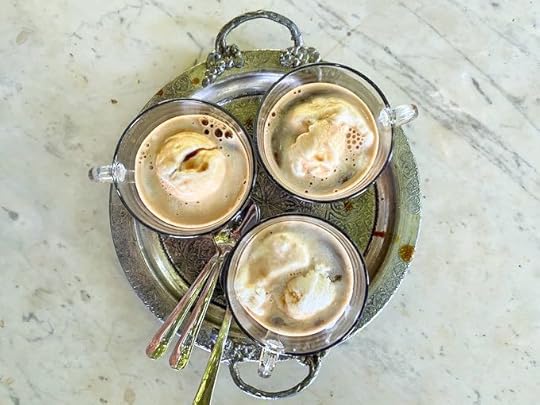
It’s cold coffee season. Maybe you were planning on being in Italy this summer to drink your iced espresso? But things just aren’t working out for that? Don’t be sad! You can still have your favorite icy cold coffee Italian style at home.
Most summers I’m in Rome and so it’s no problem running to the corner bar to grab a Shakerato. But this summer I’m up at our house in Umbria, (where I’ve been since February) and so it’s more likely that I’m having my coffee at home. And depending on my mood, I’ve been alternating between ALL of my favorite cold coffee drinks. (I drink a lot of coffee)
All of these drinks start out with home made espresso. Like any good Italian housewife I make mine in a Moka. This little pot was invented in 1933 and the best brand is still Bialetti. You can buy them in any size, from 2 cups to 20. I find the 6 cup size to be the most practical for every day coffee drinking purposes.
Coffee brands: Everyone has their favorite, I know. Mine happens to be Lavazza d’Oro. (Lavazza has several types, but I like the d’Oro, which is 100% arabica). I also use their decaf. Illy of course is another great brand, but I have to say I prefer Lavazza. But any finely ground coffee of your choice will do.
The trick to an Italian bar-quality cold coffee is (for most of these drinks) to start out with hot, freshly made espresso. I know it will be tempting to use cold leftover coffee. But really, does that ever taste good?
Shakerato – This is the drink. you may have seen people drinking in bars in Rome and wondered what it is? Usually served in a stemmed glass it’s simply freshly brewed espresso, shaken quickly in a shaker, with a bit of sugar. See this video or this blog post to see how it’s done.
Capuccino Freddo – Cold Cappucino as easy as it sounds. Take a shot of freshly brewed espresso, pour it into a glass. Add sugar if you’d like at this point. Then add about a half cup of really cold milk. Top with ice and enjoy.
Caffe Leccese – This drink is named after the gorgeous Baroque town of Lecce, in Puglia, and is enjoyed all over the southern part of that region, called Salento. It’s especially appropriate to drink this while standing in your bathing suit at the bar at the beach. Pour one shot of freshly brewed espresso into a water glass. Add about a teaspoon of almond syrup (Fabbri and Monin are easy brands to find) . Stir and then add a lot of ice. Stir again to make it cold and enjoy. I usually add a splash of milk, but that’s not traditional.
Caffe Affogato – Is this a dessert? Or is it a coffee drink? Who cares when you are pairing gelato and espresso? There are a couple of schools of thought about how to make an affogato. You can either add a bit of gelato to a cup of espresso or else pour a cup of espresso over a healthy scoop of gelato. The traditional flavor is crema, which is a custardy vanilla. But there is one bar in Rome that has made its reputation on using zabaione.
Granita di Caffe – This is something I rarely make at home, but that’s only because it’s so easy to get here in Italy in the summer. The most famous place for this frozen treat is Tazza D’Oro in Rome where it’s served with heaping amounts of unsweetened whipped cream, as it should be. But it’s super easy to make at home. Brew 1 liter/2 cups of espresso. While still hot add 300 grams (about 1 1/2 cups ) of sugar and stir to dissolve. Let it cool off a bit then pour it into a container that will fit into your freezer ( I just use a tupperware) but is big enough to hold the coffee with at least 2 inches space above. Place it in the freezer and after one hour, take it out and stir it around, breaking up the ice crystals and scraping them from the side. Do this every half hour until you all the mixture is frozen into icy crystals. Serve in a glass bowl or cup, topped with whipped cream. If it freezes solid, just take it out of the freezer for 10 minutes, then break it up with a fork.
Caffe freddo – this is something that I’ve only just learned about, from Sophie, who is currently down in Puglia. Every time she would go to someone’s house, they would offer her a caffe freddo, or cold coffee. It was a slushy, sweet strong coffee that they would always pour out of a small water bottle. She says that all good housewives down in Salento always have this on hand in the summer. Pour leftover warm coffee into a small plastic water bottle. Add about a teaspoon of sugar per cup. Shake to dissolve sugar and then put in the freezer. When a guest comes over take it out of the freezer for about 10 minutes, then give it a good shake and pour out a cup.
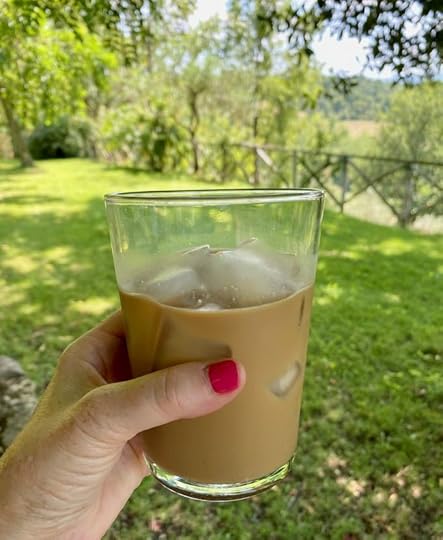
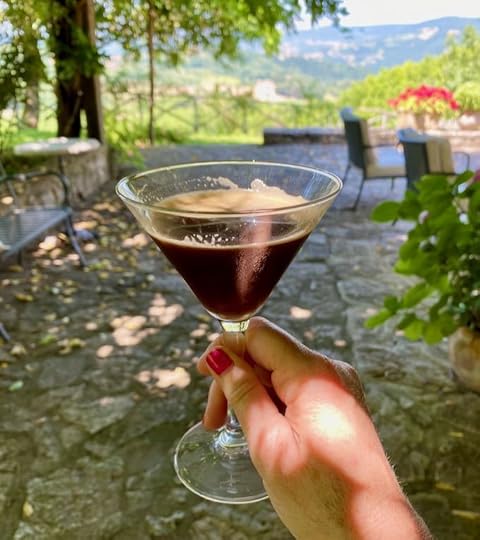
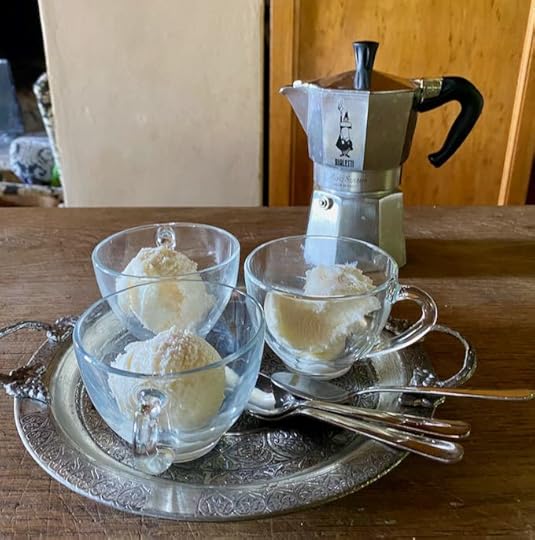
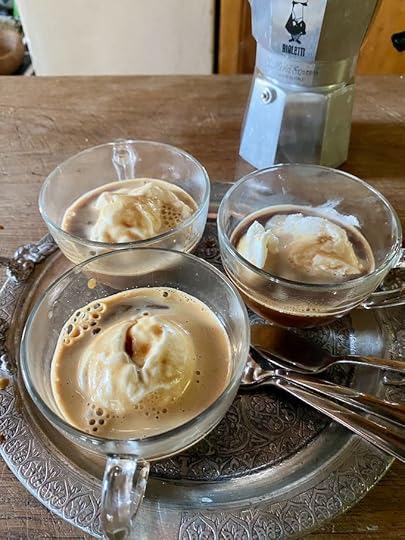

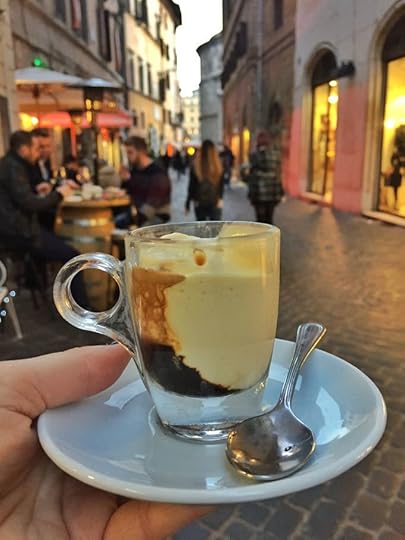
For more about drinking coffee in Rome see my book Eating Rome.
And if you’d like to join me in Italy one day to drink coffee here, I hope you can come on one of our tours.
The post Cold Coffee in Italy appeared first on Elizabeth Minchilli.


July 7, 2020
Summer Week in Puglia {2021}
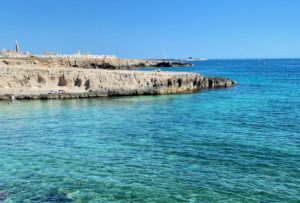
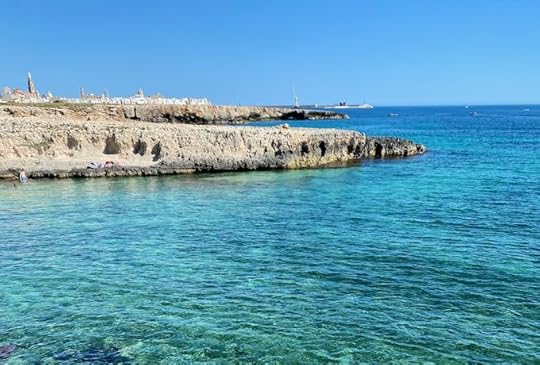
As I mentioned in my last post, once lockdown ended, the first trip that Domenico and I took was to Puglia to see Nonna. But since we were headed down anyway, I decided to add a bit of work onto our trip. After so many weeks of staying put, it felt good to be out on the road again, discovering new things, meeting new people. One of the things I’d been working on from home was a brand new tour : A Summer Week in Puglia.
While Sophie and I have been leading Week in Puglia tours for the last four years, they are usually during the off season, in October or April. We love that time of year since it takes advantage of the cooler weather as well as fewer tourists. But there is a reason that people head to Puglia during the summer. If you are following Sophie on Instagram right now you can pretty much see why. She is spending the month in Puglia and darling port towns, outdoor dining and juicy tomatoes are happening daily. And when she gets hot? There are always dips in the sea followed by crisp cold glasses of rose.
Last year’s summer tour was such a success, that we’ve decided to try it again. But we’ve changed things a bit. We will start out in Lecce for three nights. During our Summer Week in Puglia we will be doing the things we love best (cooking classes with friends, learning about olive oil) we are also adding new outings, including a trip to the fishing port town of Gallipoli.
We’ll then head to the seaside town of Monopoli for three nights, staying in this glorious hotel. This is where Domnenico and I stayed when we visited Nonna and we loved it! The hotel is made up of a series of small buildings built right into the walls that ring the city and fall right into the sea. We had cocktails on the roof, as the sun went down, and even got to spend a bit of time by the small, but lovely pool. In the evening we wandered the white washed streets, and made our way to dinner in the piazza.
While we will be doing lots of things during the days, (visit to a cheese making farm, Alberobello and Bari) there will also be plenty of time in the afternoons to head to the nearby coves for a dip in the sea. Curious?
DETAILS
WHEN
July 4-10, 2021
WHO
Space is limited to 12 guests
WHERE
We will be based for 6 nights in Puglia: 3 nights in Lecce and 3 nights in Monopoli
WHAT
Our days will be full, but don’t worry, you’ll have some down time as well to go off and explore on your own in both Lecce and Monopoli. Here is a taste of what we’ll be doing:
Welcome dinner in a private palace
Cooking class in a small village
Visit to the baroque towns of Galatina and Nardo
Lunch at the Port tow of Gallipoli
Visit to an ancient olive mill
Organic Farm Visit
Unesco recognized town of Alberobello
Morning in Bari
And more…..
Would you like to join us? Just send me an email and I’ll send you the brochure which includes the pricing.
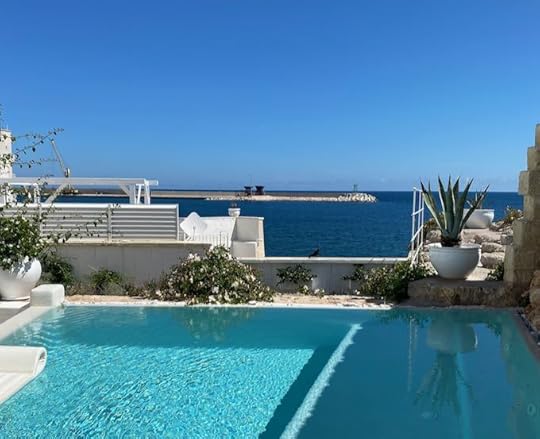
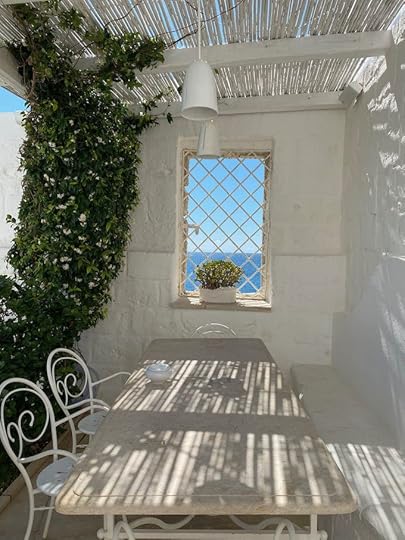
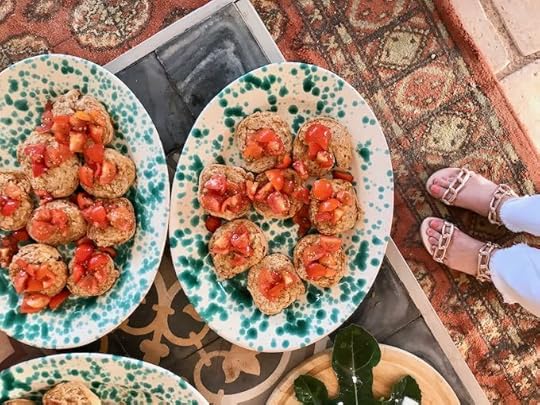
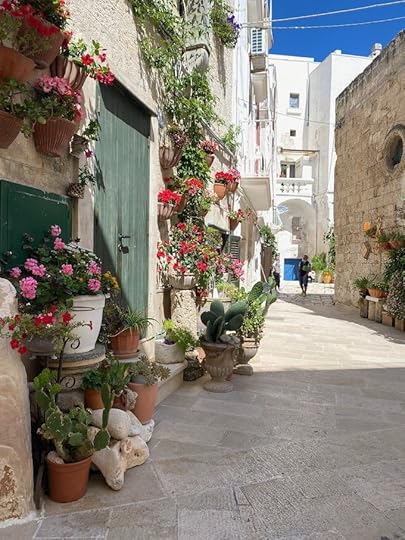
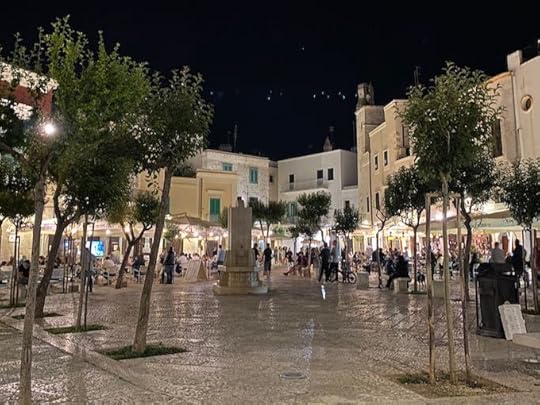
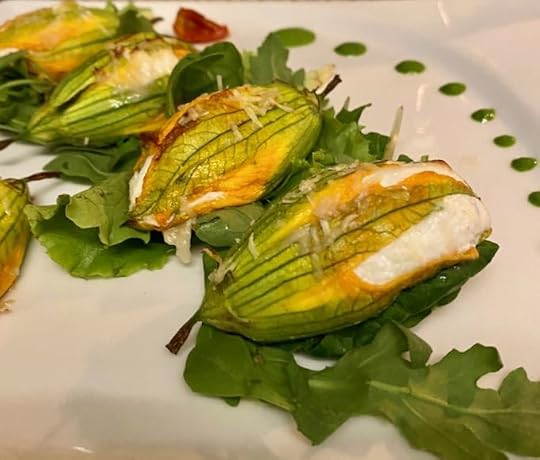

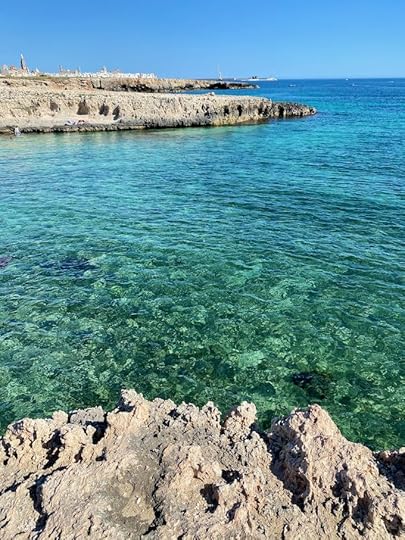
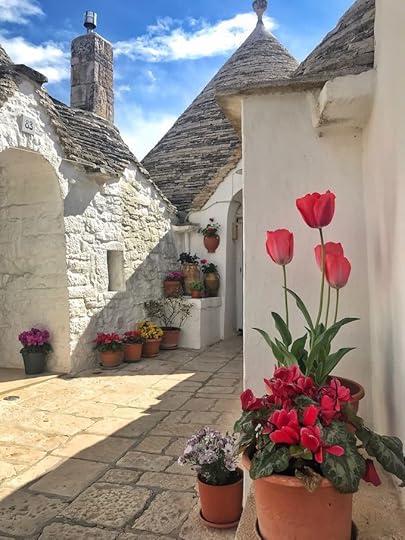
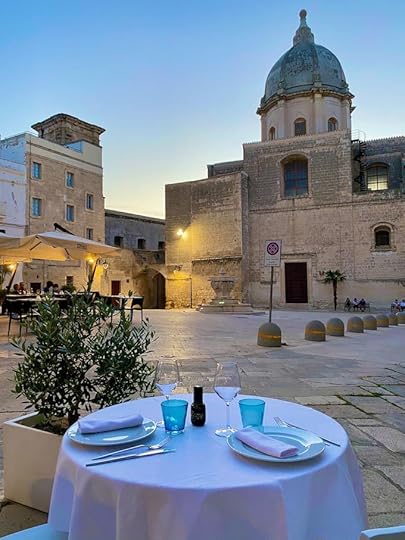

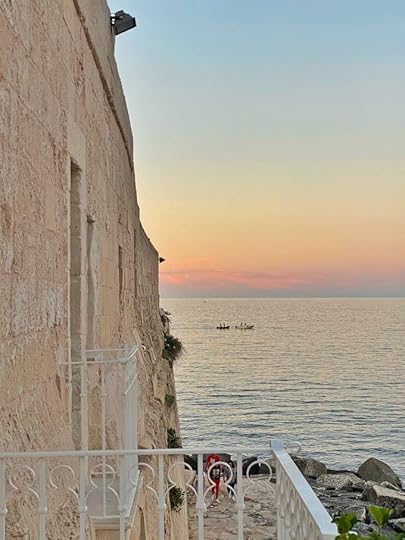
We are planning lots of delicious food tours for 2021 and 2022. We’ll be visiting Sicily, Puglia, Umbria, Abruzzo and Parma. To see our latest schedule of all of our tours visit this page.
The post Summer Week in Puglia {2021} appeared first on Elizabeth Minchilli.


June 30, 2020
stuffed onions
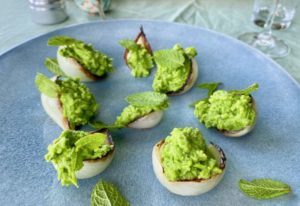
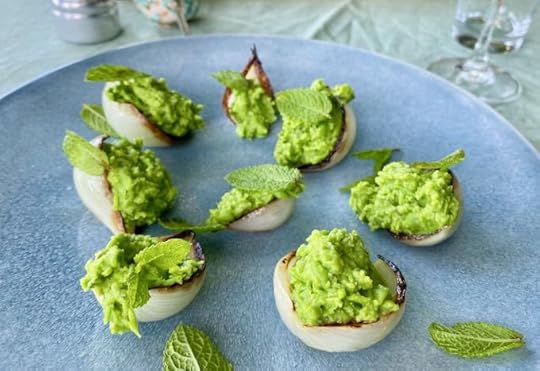
Onions are one of those things that people take for granted. Usually an added ingredient, they are rarely the star. Which is why I love it when I find dish that brings these alliums the love they deserve. These little stuffed onions do just that.
I first had these at our friends B&B in Todi. Lisbeth and Thomas have been running Il Ghiottone Umbro for about 10 years, and their small (4 bedroom) place combines Nordic style (they are Danish) and great food with a focus on wonderfully inventive cooking based on local ingredients.
We had these little appetizers with a glass of wine one evening and I was so charmed that I came back one morning last week to see how they were made (Thomas and Lisbeth hold cooking classes for their guests). When I first had them they were made with the freshest, sweetest first of the season peas. By the time I came back, pea season was waning and so they ended up using frozen peas, and they were delicious.
While the contrast between the caramelized edges of the onion and the bright green of the pea puree is gorgeous this recipe lends itself to seasonal substitutions. Carrots would be great, or bright orange winter squash. And fave seems like a no-brainer. Another option is of course ricotta whipped with fresh herbs.
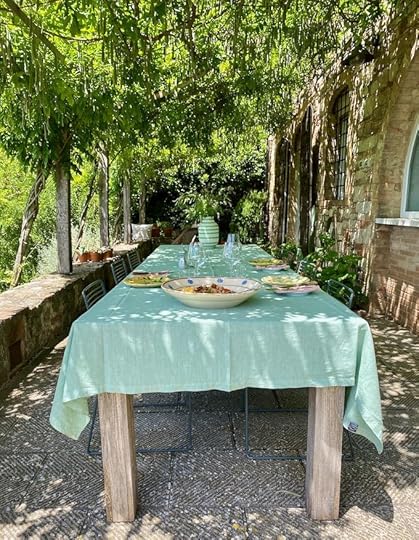
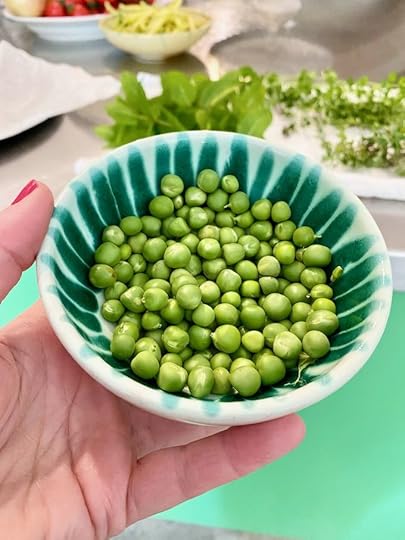
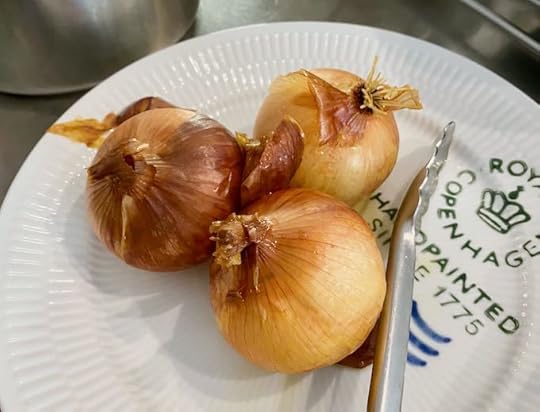
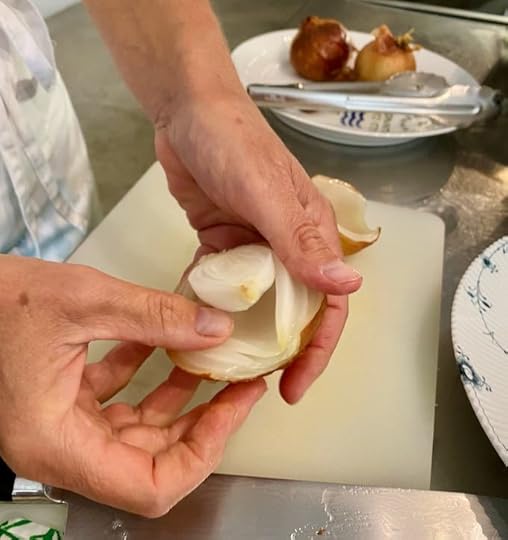
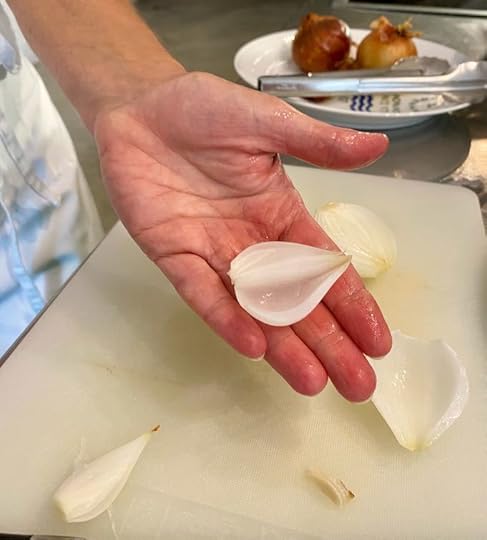
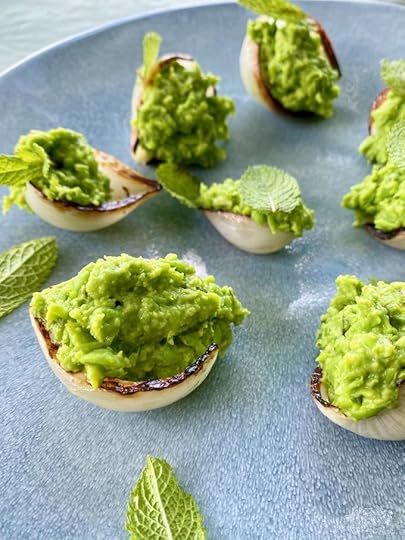
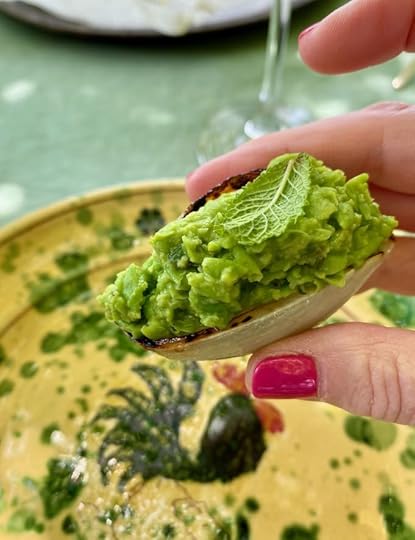
Stuffed Onions
This is one of those recipes that is open to tons of variations. Stuffings should be season and can include carrots, beets, sweet potatoes, pumpkin. Another alternative is to use whipped ricotta.
Ingredients
3 large yellow onions
1 clove garlic
1 1/2 tsp salt
400 grams / 1 pound peas
3-4 tablespoons olive oil
black pepper
zest and juice of 1/2 lemon
Instructions
Wash the onions and boil them whole, with the skins on, for about 20 minutes. They should be just cooked, and kind of spongey to the touch. Drain and let them cool for about 10 minutes.
In the meantime place peas in a pot of water, with the garlic, sprig of mint and 1 tsp salt. Cook until just done, and drain and rinse under cool water.
Puree peas with the olive oil, rest of salt and a bit of freshly ground black pepper. Add lemon juice and zest and taste to adjust for seasoning. When completely cool add 1/2 cup chopped fresh mint.
Cut ends off of the onion and cut in half through the root. Gently divide the sections into cups, using your hands.
Choose the medium sized cups (reserve the rest of the onion for another use. You can even freeze them).
Place a small non-stick over medium high heat. Brush with olive oil. Gently place the onion cups, lip side down, in the pan. Let cook without moving until the edges develop a nice char. Gently lift them out, and let cool.
Fill the shells with the puree and garnish with fresh mint.You can also garnish with a bit of grated ricotta salata.
You can also serve these as a side dish. In this case use the bigger shells and salt or marinate them a bit first.
If using red onions (which is also pretty!) after you divide them into cups, marinate them for a bit in vinegar to turn them back to their bright red color.
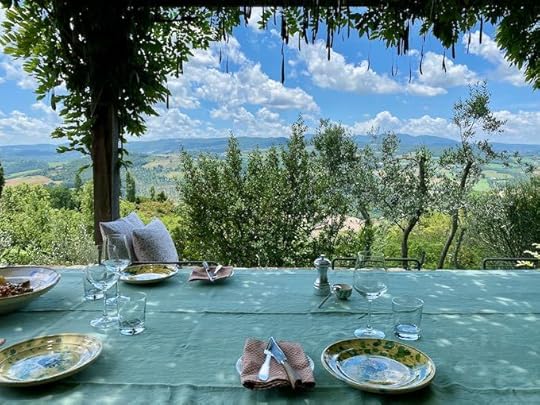
Il Ghiottone Umbro
(+39) 339 1321 509
Todi, Umbria (Italy)
The post stuffed onions appeared first on Elizabeth Minchilli.





